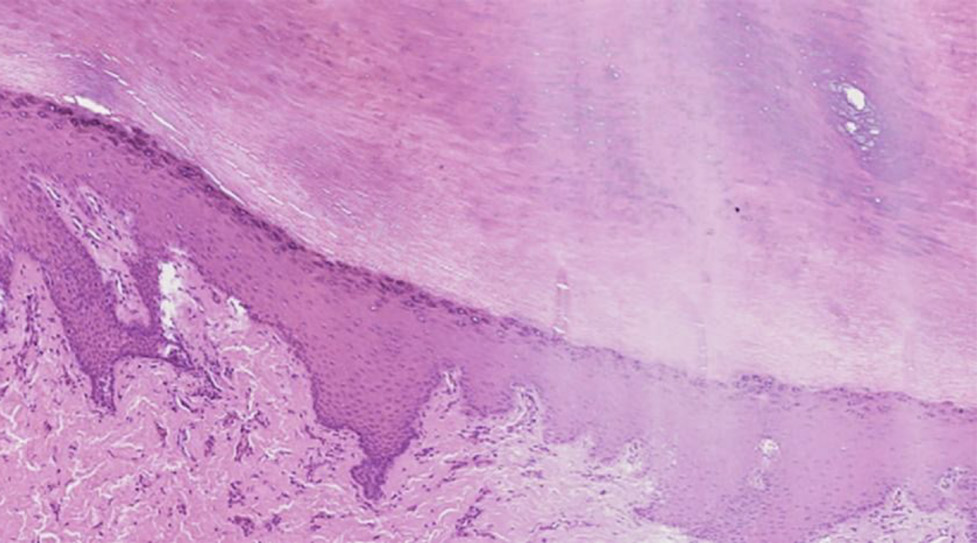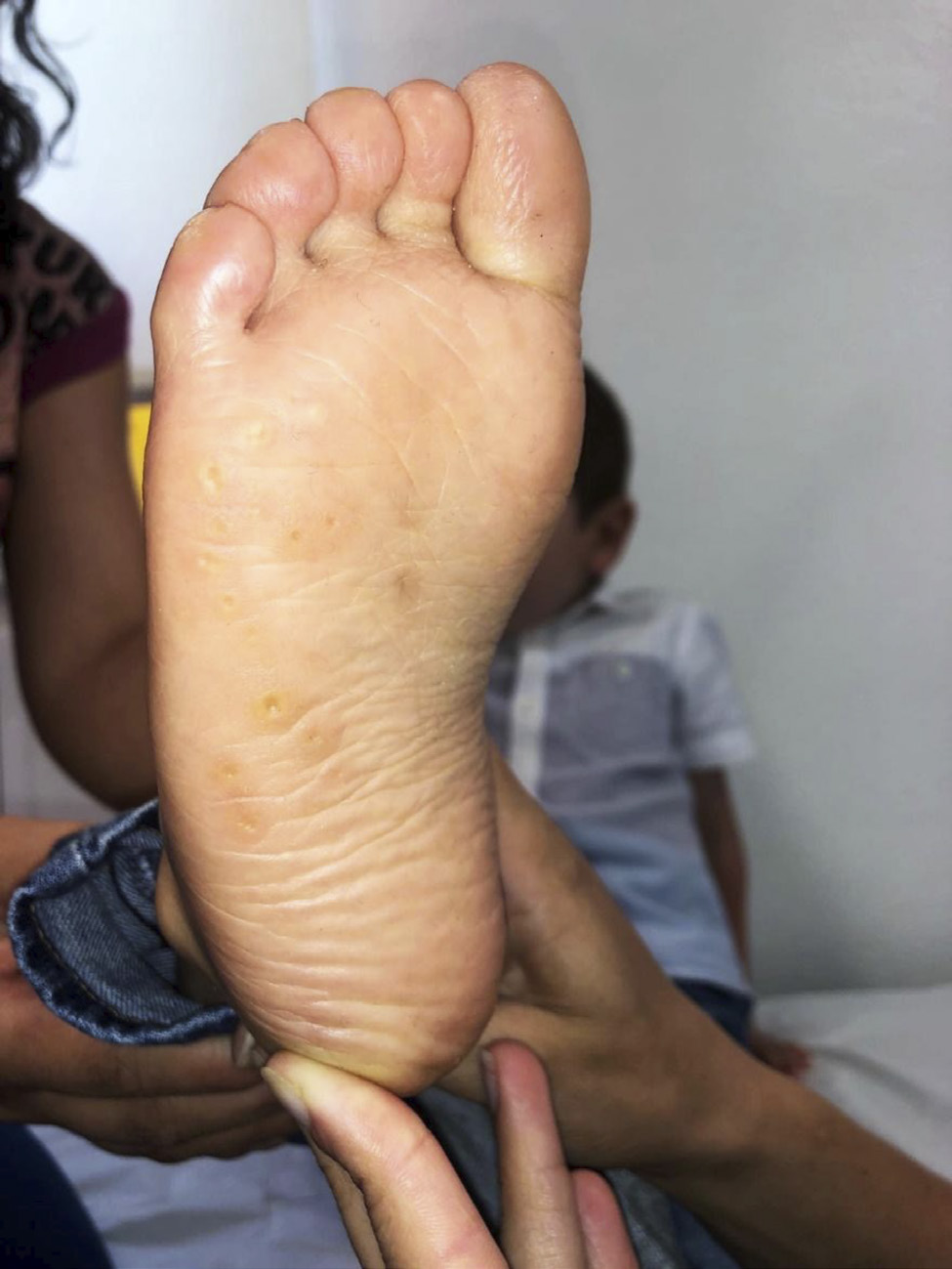A 5-year-old caucasian boy, born of non-consanguineous parents, was referred to the dermatology department due to palmar hiperlinearity and multiple 2-3 mm hyperkeratotic circular lesions in the soles (Fig. 1). The remaining physical examination was unremarkable. There was a family history of palmoplantar hyperkeratosis in the mother and maternal grandfather. To spare the child, a punch skin biopsy was taken from his mother. Pathology revealed an epidermis with irregular acanthosis and orthokeratotic hyperkeratosis, without other morphologic alterations (Fig. 2). Clinical aspect of the lesions associated with a positive family history and histologic findings allowed the diagnosis of punctate palmoplantar keratoderma. Satisfactory results were achieved with urea 20% cream and emollient applied to the soles.

Figure 2: Histological cut of the sole skin of the mother reveals epidermis with irregular acanthosis and orthokeratotic hyperkeratosis (hematoxylin-eosin, 20X).
Palmoplantar keratodermas are a heterogeneous group of hereditary or acquired diseases, characterized by an excessive epidermal thickening of palmoplantar surfaces.1-5 One of its rare hereditary forms is punctate palmoplantar keratoderma (Brauer-Buschke-Fischer syndrome), that follows a pattern of autosomal dominant inheritance with variable penetrance, and usually appears in late childhood to adulhood.3 In our case the age of presentation was much earlier, which is uncommon. This genodermatosis, although benign, tends to suffer clinical worsening over time,3 and may be associated with the development of neoplasms (pancreas, colon, breast, kidney and lymphoma).2,4 There is no efficient treatment, although some improvement may be achieved with the use of emollients and topical keratolytics. Other treatments such as psoralen plus ultraviolet A (PUVA), systemic or topical retinoids or liquid nitrogen have also been used, with limited success.4
















